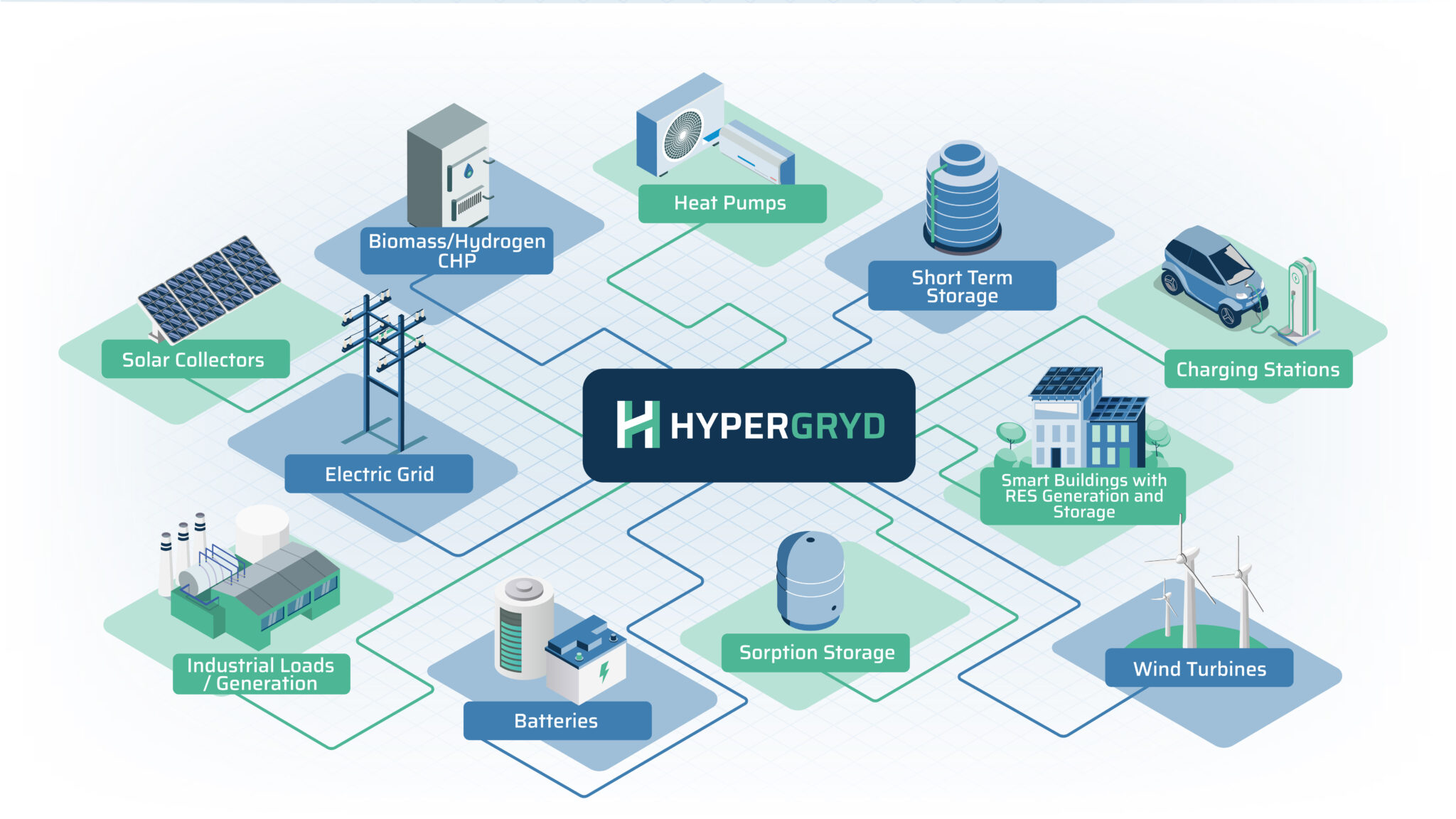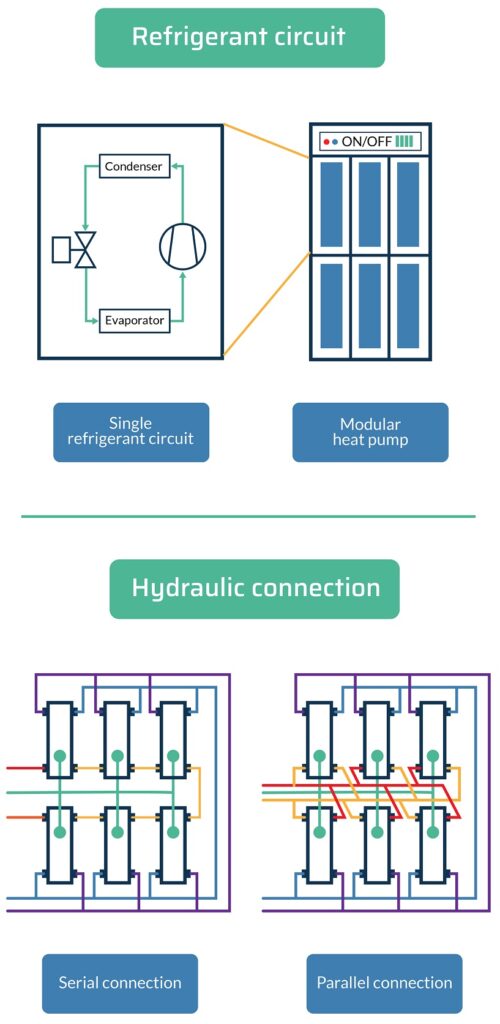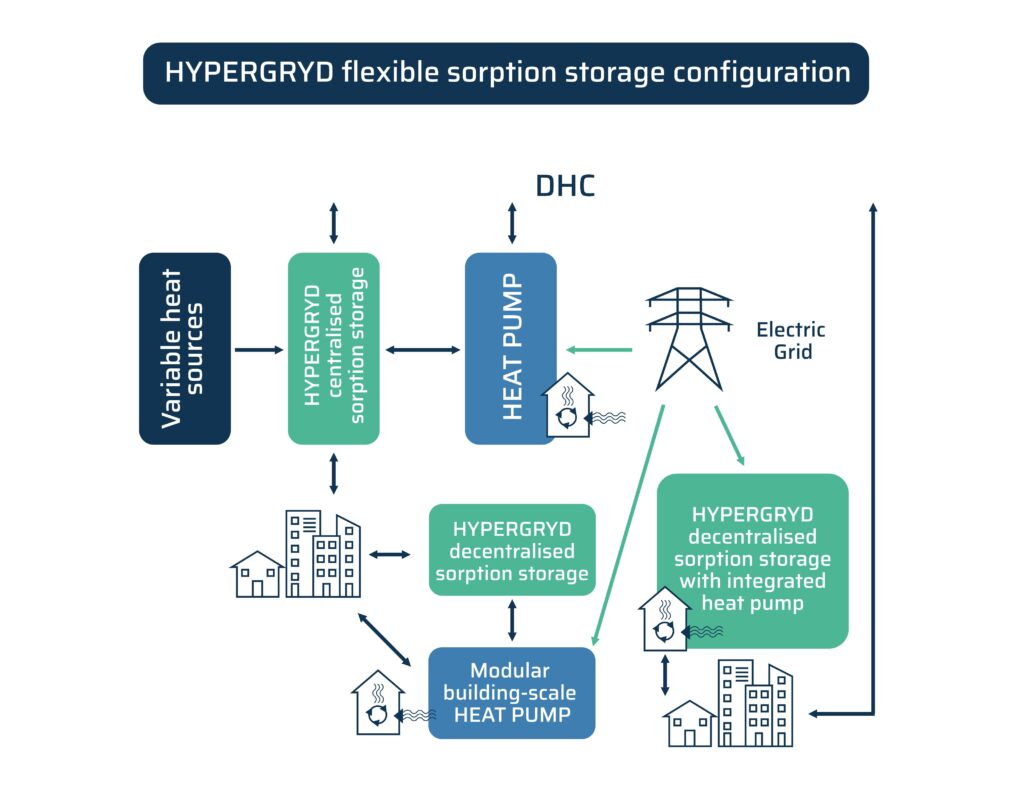Technologies
Layer 1 – RES-based Enabling Technologies
The transition of the energy sector towards a higher penetration of renewables is a challenge that cannot be tackled by improving the efficiency of renewable generation alone, it is rather a problem that involves intertwined technical, environmental and socio-economic issues. For their intrinsic nature, Variable Renewable Energy Sources (VRES) are difficult to accommodate by the power system, and the rise of VRES technologies is putting the electric grid under pressure.
From a technical perspective, cost-effective and efficient ways to improve the flexibility of the power system to transition towards a 100% renewable scenarios are: power-to-heat technologies, thermal storage technologies for energy dispatchability, improvement of management algorithms for VRES with active local energy markets, and increasing the energy mix at country-level.
For this purpose, HYPERGRYD proposes three different Key Enabling Technologies.

Key Enabling Technology 1 - Modular Heat Pump with short-term PCM storage
AIT and OCHSNER aim at developing, building and testing a functional prototype of a decentralized, sound-optimized heat pump solution with refrigeration circuit modules connected in series or parallel for flexible operation. The heat pump is operated using the optimum/minimum refrigerant amount per refrigeration circuit. This renewable technology is intended to be installed decentralized for new buildings and can replace existing gas-fired boilers in large-volume residential or neighbourhood construction, maximizing decarbonization levels for existing housing in this segment.
Innovations
- Proven concept of a heat pump based on several refrigeration circuit modules, taking into account optimum/minimum charge per refrigeration circuit and minimum noise emissions. The aim is to develop a technically feasible concept and its ecological and economic evaluation for supplying a smart decentralized heat pump system in new buildings with the capability to substitute gas boilers in existing apartments by heat pump technology.
- Optimum integration of the modular heat pump into the existing thermal grid through the design specifically intended for operation of such a heat pump at heating flow temperatures of 35, 50 and 65ºC. Through serial cascading, a COP improvement of up to 15% is possible compared to a single system.
- Short-term latent storage with increased energy density. Compensation for short-term fluctuation of energy available from RES in the grid and the possibility of supplying DHW also in low-temperature DHC, such as 5th generation will be efficiently achieved thorugh the development and manufacturing of an innovative latent heat storage at AIT based on the RPW (Refrigerant-PCM-Water)-HEX design developed in the HYBUILD and CHALLENGE projects, and will be a three media HEX with Domestic Hot Water (DHW), PCM and Water passages (DPW-HEX).
Key Enabling Technology 2 - Sorption Thermal Energy Storage
The core of long-term storage using thermochemical technology lies in a joint development by CNR-ITAE and SORPTION TECHNOLOGIES and will be the first of its kind to be specifically designed for 4th and 5th generation DHC network.
Innovations
- Composite material suitable for low-temperature heat charge, exploiting waste heat and solar heat from non-concentrating collectors (50-60ºC). Composite materials will be used, exploiting the opportunity to modify and thus tailor the sorption properties according to the exact demand of each system. This will allow the adaptation to the different RES and waste heat sources available in the network, for a higher flexibility in the operation of the storage, targeting heat storage density in the range of 1.1-1.3 GJ/m3.
- Innovative multi-modular configuration with the possibility of using different sorption materials in the different modules. Modules will be developed based on a patented design of an adsorption chiller that features a direct distribution of the pumped liquid refrigerant (water) between the phase changer and the adsorber. Such design choices allow some key advantages: higher flexibility in adapting to the different heat sources in the grid, possibility of operation according to a demand-response approach by operating only some of the modules, easy handling during assembly, installation & maintenance, and maximised heat transfer efficiency compared to a single-tank seasonal storage, due to the possibility of exchanging heat only with a portion of the material and therefore with lower heat losses.
- Optimization of operation as a multi-directional system to provide heating and cooling with COP of at least 1.2 (heating) and 0.6 (cooling) both to- and from- distributed prosumers, for a better integration with all the resources available and to exploit also power-to-heat approach and act as a service to both DHC and electric grid. Different configurations of the modules will be evaluated able to exploit different cold or heat distribution systems, and in one layout also by integrating a compression loop within the adsorber.
Key Enabling Technology 3 - Reversible micro-CHP with steam engine and steam buffer
Steam power offers unique possibilities to exploit low-exergy energy sources, such as renewables and waste heat, compared to conventional power cycle. However, today steam power mainly exists only in large centralized power plant with steam turbines, whereas small-scale steam power (< 1000 kW unit) should be implemented as a reciprocating piston engine. The solution proposed by HYPERGRYD is based on the SAAB SCANIAS steam engine project for automotive applications where specific power (kW/kg, kW/l, kW/Euro) was of paramount importance. Steam engine will realize small-scale DG (Decentralized Generation) implemented as steam power with unique energy flexibility capabilities including exploitation of waste heat from other technologies as internal combustion engines and high temperature fuel cells. The system also includes a TES (Thermal Energy Storage) solution called steam buffer (SB). The SB is a high-power density TES employing sensible heat mechanism with long cycle life compared to electric batteries.
Innovations
- Mechanical solution which together with appropriate material combination can realize an oil-free high shaft speed (3,000-6,000 rpm) steam engine for flexible application in small-scale and part-load.
- Steam Buffer thermal energy storage for operation under demand/response approach, since it makes it possible respond to the local heating/cooling load fast even if the heat sources are intermittent solar or biofuel burner that operate at constant load to offer efficient combustion and low emissions.
- Steam engine that can operate in reversed mode (as a heat pump) and charge the SB (Steam Buffer), offering both electric and thermal peak shaving as well as both electric and thermal “valley filling”.




